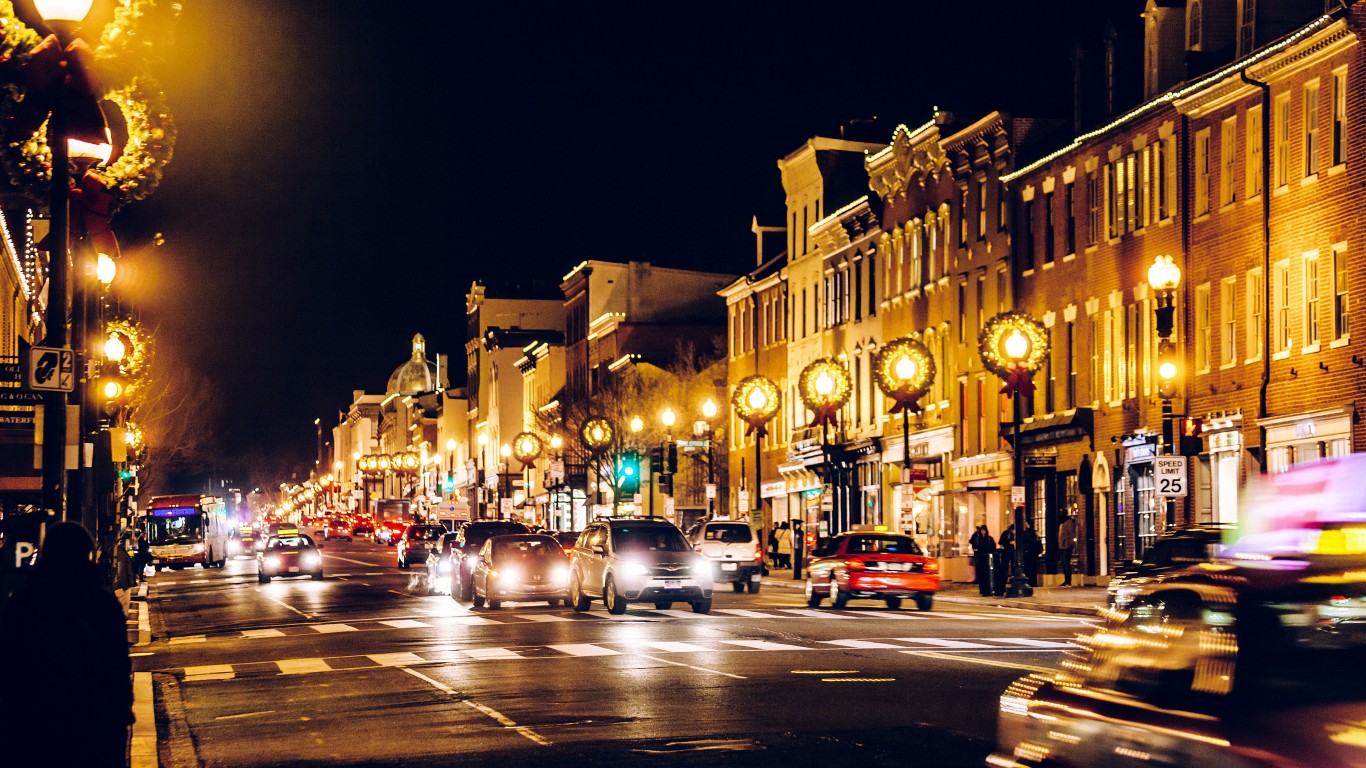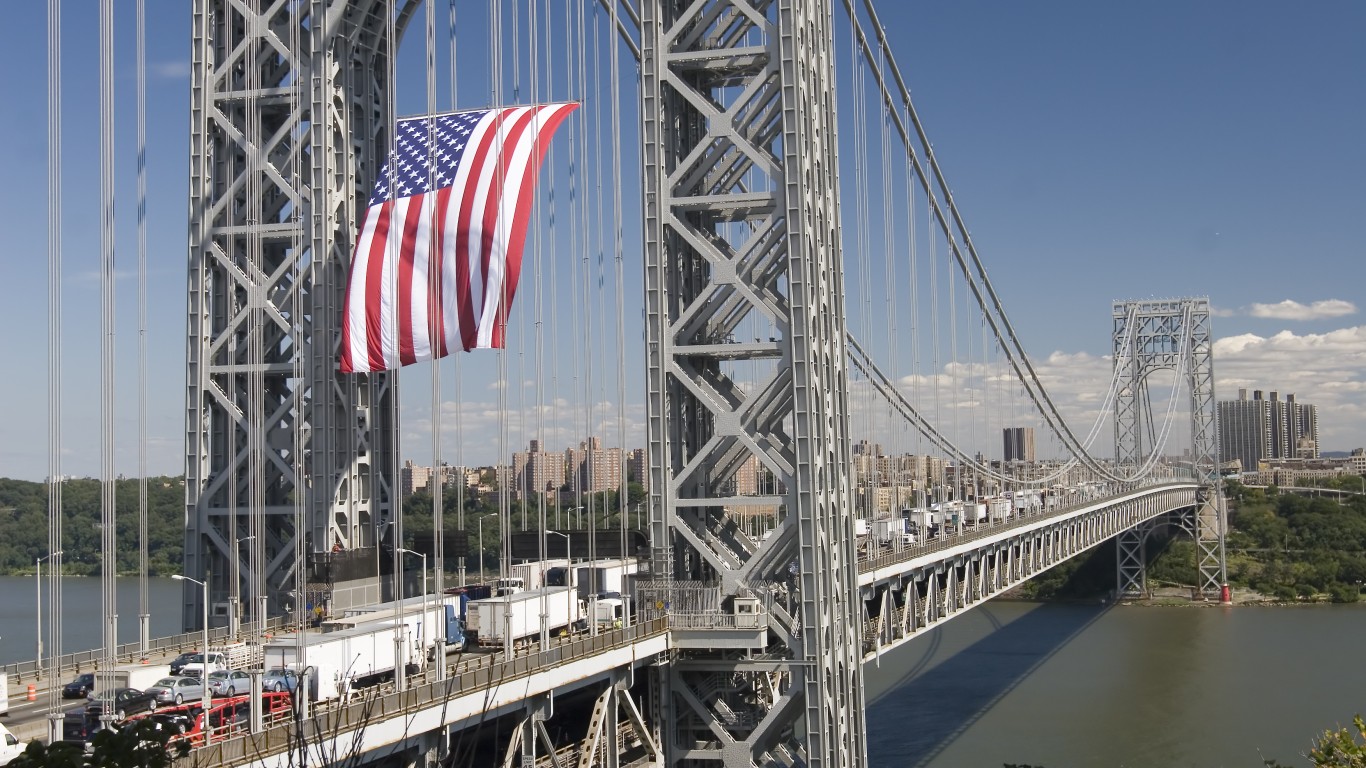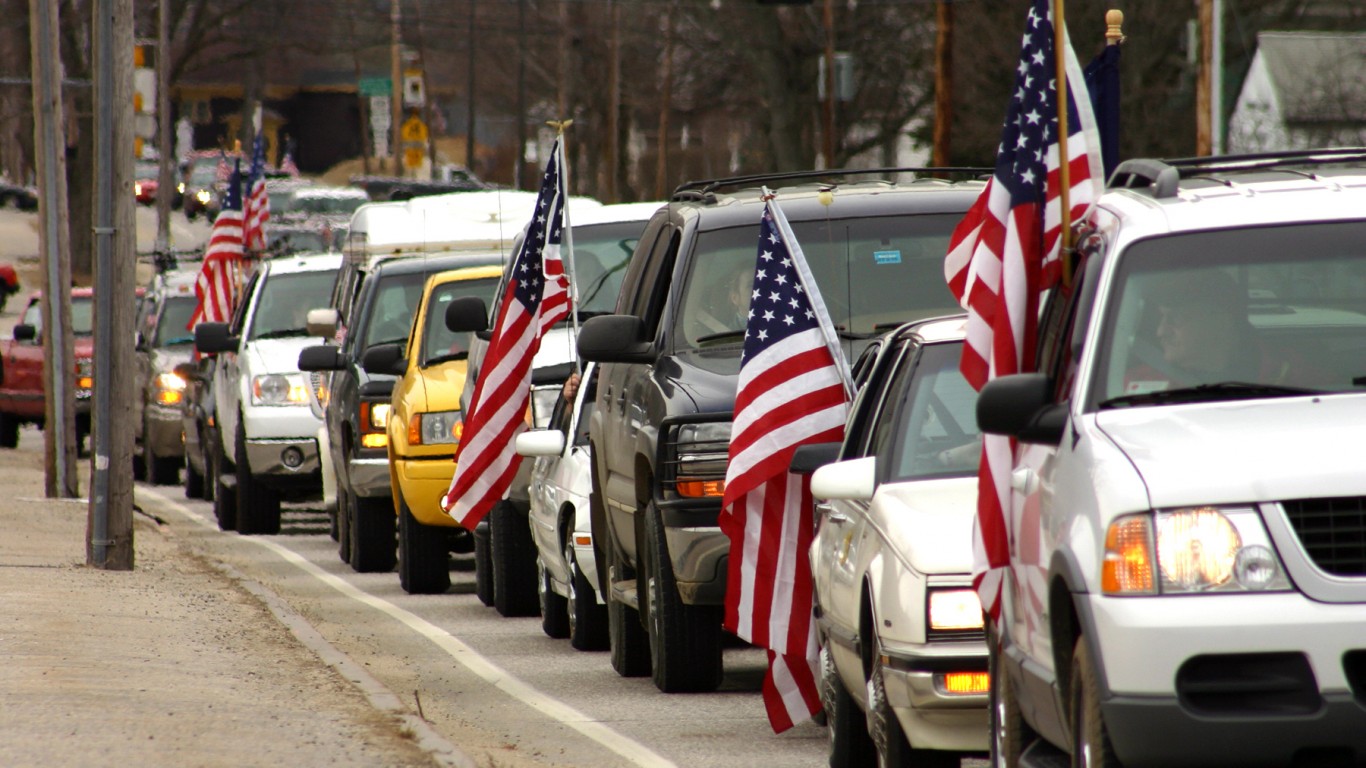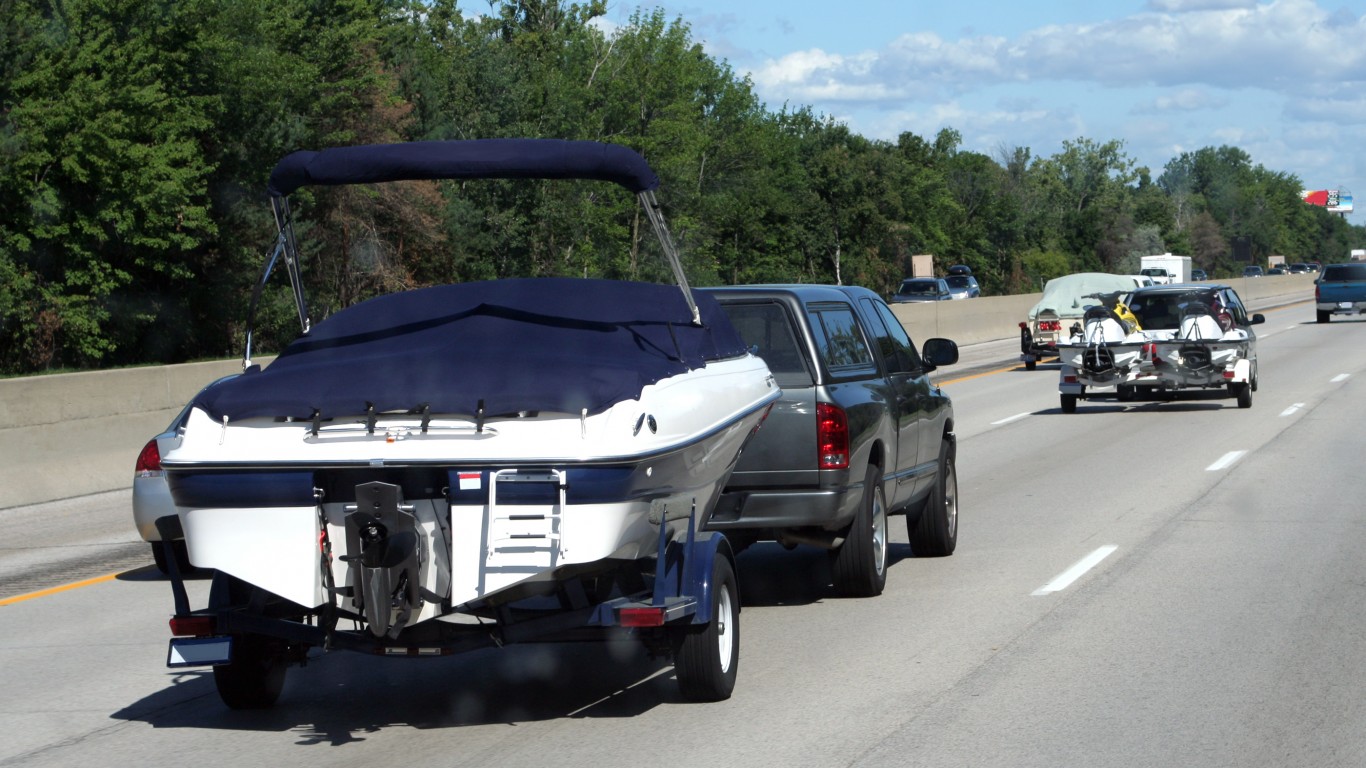
This Memorial Day, millions of Americans will travel to meet with friends and family and enjoy the start of the summer. This means traffic to the beaches and out of the city will almost certainly be at times bumper-to-bumper. Most people will make it to their destination several hours after Google Maps’ first estimate.
Risks associated with holiday driving are by no means limited to this holiday During every major holiday in the United States, the risk of being involved in a fatal accident goes up. Not only does increased travel create more opportunity for fatal accidents, but also motorists are more likely to be driving impaired over holiday periods, either due to fatigue or alcohol use.
A new report released by the National Highway Traffic Safety Administration shows that some holidays are more dangerous for travel than others. Using data from the NHTSA, 24/7 Wall St. identified the deadliest holidays for drivers. We ranked each of the six major holidays covered by the NHTSA – New Year’s, Memorial Day, the Fourth of July, Labor Day, Thanksgiving, and Christmas – by the total number of traffic fatalities reported from 1983 to 2020.
Since 1983, the share of people killed in accidents involving a driver with a blood alcohol level above the legal limit during a holiday ranges from 39% to 44%. For context, only 30% of all traffic fatalities involved an alcohol impaired driver in all of 2020. (Here is a look at when you’re most likely to die in a drunk driving accident in every state.)
Fortunately, improved vehicle safety features have contributed to the decline in fatality rates in recent decades when controlling for total vehicle miles traveled. Aside from a slight uptick in fatalities per miles traveled in the first year of the pandemic, American roads have gotten safer nearly every year since the mid-1970s. Indeed, the worst year for traffic deaths for each holiday on this list was at least two decades ago. (Here is a look at the states where car deaths are increasing the most.)
Click here to see the worst holidays to drive, ranked.
Click here to read our detailed methodology.

6. Christmas
> Total driving deaths, 1983-2020: 14,386 (40.9% involving alcohol)
> Total Christmas holiday days, 1983-2020: 113 (avg. of 3.0 days per year)
> Avg. deaths per day over holiday: 4,901 (the fewest of 6 holidays)
> Deadliest year, 1983-2020: 1984 (643 driving deaths)
[in-text-ad]

5. New Year’s
> Total driving deaths, 1983-2020: 14,400 (43.6% involving alcohol)
> Total New Year’s holiday days, 1983-2020: 113 (avg. of 3.0 days per year)
> Avg. deaths per day over holiday: 5,100 (4th most of 6 holidays)
> Deadliest year, 1983-2020: 2002 (575 driving deaths)

4. Memorial Day
> Total driving deaths, 1983-2020: 18,217 (43.6% involving alcohol)
> Total Memorial Day holiday days, 1983-2020: 114 (avg. of 3.0 days per year)
> Avg. deaths per day over holiday: 6,072 (3rd most of 6 holidays)
> Deadliest year, 1983-2020: 1986 (616 driving deaths)

3. Fourth of July
> Total driving deaths, 1983-2020: 19,028 (43.2% involving alcohol)
> Total July 4th holiday days, 1983-2020: 113 (avg. of 3.0 days per year)
> Avg. deaths per day over holiday: 6,597 (the most of 6 holidays)
> Deadliest year, 1983-2020: 1989 (748 driving deaths)
[in-text-ad-2]

2. Labor Day
> Total driving deaths, 1983-2020: 19,146 (43.7% involving alcohol)
> Total Labor Day holiday days, 1983-2020: 114 (avg. of 3.0 days per year)
> Avg. deaths per day over holiday: 6,382 (2nd most of 6 holidays)
> Deadliest year, 1983-2020: 1986 (663 driving deaths)

1. Thanksgiving
> Total driving deaths, 1983-2020: 20,107 (39.3% involving alcohol)
> Total Thanksgiving holiday days, 1983-2020: 152 (avg. of 4.0 days per year)
> Avg. deaths per day over holiday: 5,027 (5th most of 6 holidays)
> Deadliest year, 1983-2020: 1987 (659 driving deaths)
Methodology
To identify the deadliest holidays for drivers, 24/7 Wall St. reviewed traffic fatality statistics from the National Highway Traffic Safety Administration. We ranked the six holidays with driving death statistics from the NHTSA: New Year’s, Memorial Day, the Fourth of July, Labor Day, Thanksgiving, and Christmas. Holidays are ranked by the total number of people killed in traffic accidents from 1983 to 2020.
All roadway deaths that took place during the holiday period were considered. It is important to note, however, that for most holidays, the length of the holiday period can change from year to year.
We also calculated the approximate share of deaths resulting from accidents involving an alcohol-impaired driver. To be considered as involving alcohol, a driver or motorcycle driver involved in a deadly crash needed to have a blood alcohol concentration of at least 0.08 grams per deciliter.
Are You Ahead, or Behind on Retirement? (sponsor)
If you’re one of the over 4 Million Americans set to retire this year, you may want to pay attention.
Finding a financial advisor who puts your interest first can be the difference between a rich retirement and barely getting by, and today it’s easier than ever. SmartAsset’s free tool matches you with up to three fiduciary financial advisors that serve your area in minutes. Each advisor has been carefully vetted, and must act in your best interests. Start your search now.
Don’t waste another minute; get started right here and help your retirement dreams become a retirement reality.
Thank you for reading! Have some feedback for us?
Contact the 24/7 Wall St. editorial team.


